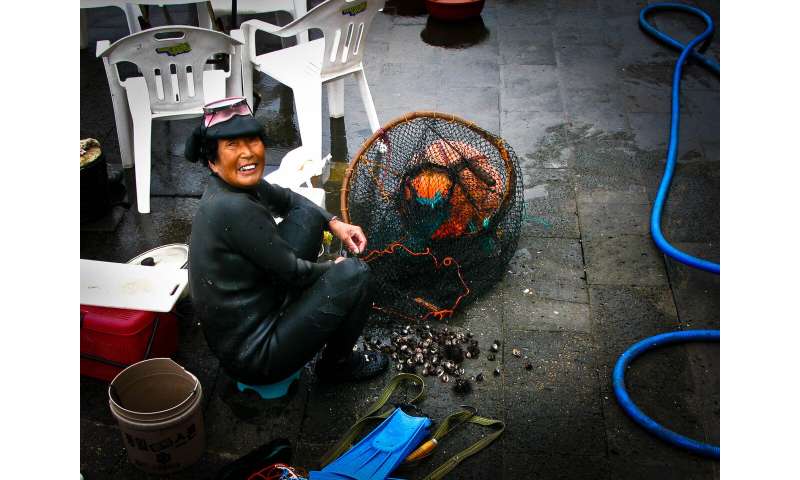"Trump is an anathema to everything I was taught to love about Jesus,"
said Arkansas pastor and Vote Common Good Political
Director Robb Ryerse.

President Donald Trump speaks last fall at the Values Voter Summit in Washington, D.C. Vote Common Good aims to open the eyes of religious Americans who voted for Trump four years ago and now see his "un-Christian" policies that are backed by the Republican Party. File Photo by Pete Marovich/UPI | License Photo
March 4 (UPI) -- Religious conservatives in the United States are one key segment of the population on whom President Donald Trump is counting this fall for re-election. But he most likely won't curry favor with a small group of progressive Christians who are traveling the country to challenge the belief he's got their vote locked up.
Vote Common Good, a group of self-identified "progressive evangelicals," is presently on a national bus tour with stops in several primary states its members hope will sway faith-based voters to vote against Trump by appealing to once-dominant traditions of American religious liberalism.
The tour began in January and will run through April 26 -- covering all 50 states and Washington, D.C. Future dates will take the tour to states that include Missouri, Ohio, Florida, Illinois, Wisconsin, Oregon, Washington, Hawaii and Alaska.
The group's mission may seem counterintuitive, given recent political realities.

President Donald Trump speaks last fall at the Values Voter Summit in Washington, D.C. Vote Common Good aims to open the eyes of religious Americans who voted for Trump four years ago and now see his "un-Christian" policies that are backed by the Republican Party. File Photo by Pete Marovich/UPI | License Photo
March 4 (UPI) -- Religious conservatives in the United States are one key segment of the population on whom President Donald Trump is counting this fall for re-election. But he most likely won't curry favor with a small group of progressive Christians who are traveling the country to challenge the belief he's got their vote locked up.
Vote Common Good, a group of self-identified "progressive evangelicals," is presently on a national bus tour with stops in several primary states its members hope will sway faith-based voters to vote against Trump by appealing to once-dominant traditions of American religious liberalism.
The tour began in January and will run through April 26 -- covering all 50 states and Washington, D.C. Future dates will take the tour to states that include Missouri, Ohio, Florida, Illinois, Wisconsin, Oregon, Washington, Hawaii and Alaska.
The group's mission may seem counterintuitive, given recent political realities.
With about 75 percent of white evangelicals approving of his job performance in mid-2019, Trump's support among the key cadre of white evangelicals who formed the bedrock of his 2016 election still appeared largely intact by the time of the first primaries this year.
Continuing support was visible in December after an editorial in Christianity Today, a magazine founded by evangelical icon Billy Graham, broke ranks with the Republican Party and called for Trump's impeachment on moral grounds.
More than 200 prominent conservative evangelical leaders, including former Arkansas Gov. Mike Huckabee and former Minnesota Rep. Michele Bachmann, quickly jumped to his defense in a letter to the magazine that said it not only targeted "our president," but also targeted "those of us who support him, and have supported you."
RELATED Growing Christian movement agrees with Rick Perry that God chose Donald Trump
Trump has been working non-stop to solidify Christian support ever since -- appearing last month at the annual March for Life in Washington, D.C., and declaring himself the "most pro-life president in American history."
Vote Common Good, however, says it senses backlash brewing among some of Trump's evangelical supporters -- over issues like his harsh treatment of immigrants -- and that it's perhaps enough to make a difference in November.
The group first surfaced ahead of the 2018 midterm elections, and wants to persuade at least some religious supporters to reassess support for Trump -- and his actions that do not align with Christian, Jewish, Muslim or other religious traditions and values.
Their pitch, said Minneapolis-based pastor and Vote Common Good Executive Director Doug Pagitt, is to back the "common good" of the United States.
"Our message to evangelicals is, even if you're a Republican, it doesn't mean you have to vote for the guy in the White House," Pagitt said at a tour stop in Boston. "In New Hampshire, for instance, we held an event with Republican presidential candidate William Weld. We're telling religious voters there are other choices."
Vote Common Good hopes to open the eyes of religious Americans who voted for Trump four years ago, who now can recognize his "un-Christian" policies and personal behaviors that are wholly backed by the Republican Party.
Arkansas pastor, former Republican congressional candidate and Vote Common Good Political Director Robb Ryerse summed up the group's position in Time magazine last month.

"Trump is an anathema to everything I was taught to love about Jesus, everything I was taught about how to live out my faith," he wrote in an op-ed. "His disdain for decency, disrespect toward basic tenets of right and wrong and complete disregard for the most vulnerable among us could not be more fundamentally un-Christian."
This view has earned Vote Common Good harsh criticism from some conservative quarters. Last fall, the Family Research Council declared it a group of "ultra-liberal pastors and speakers" whose aim was to "dress up" a radical political agenda in "biblical terms" and to "sow confusion and division among Bible-believing Christians."
Pagitt, however, said the group's message -- which harks back to the religious roots of the late 19th-century progressive movement -- nevertheless remains a powerful one for some evangelicals. And while admitting that Trump most likely will retain most of his religious base, losing even a small number could make a substantial difference.
"We know there are many people who felt like they gave a try to Donald Trump in 2016, but who are now having a crisis of faith," he said. "We think they're not going to fall in line to the same degree this time.
"And if he doesn't get 80 percent of them in states like Pennsylvania, Michigan, Wisconsin and Florida, he's in trouble."
How successful can Vote Common Good be in taking a piece of Trump's religious base? It's probably too early to tell. The group's strategy is not the same as those of former Democratic candidate Pete Buttigieg and candidate Sen. Elizabeth Warren, who have courted the religious progressives who have never supported Trump.

"What these progressive groups seem to be doing is trying to tap into a long history of religious support for progressive issues," said David Mislin, an expert in American religious history at Philadelphia's Temple University.
"This goes back to the Social Gospel and support for the labor movement in the early 20th century and continued through the Civil Rights Movement."
He said, though, that he questions how much Vote Common Good's message might resonate among the Catholic and evangelical voters it wants -- mainly because of its perceived "leftist" rhetoric.
"It's offering a pretty progressive message, while nevertheless presenting itself as trying to reach a broad constituency," Mislin said. "But I think it's very much an open question as to whether this pitch will get any traction. Personally, I'm skeptical that it will."
Vote Common Good, however, says it senses backlash brewing among some of Trump's evangelical supporters -- over issues like his harsh treatment of immigrants -- and that it's perhaps enough to make a difference in November.
The group first surfaced ahead of the 2018 midterm elections, and wants to persuade at least some religious supporters to reassess support for Trump -- and his actions that do not align with Christian, Jewish, Muslim or other religious traditions and values.
Their pitch, said Minneapolis-based pastor and Vote Common Good Executive Director Doug Pagitt, is to back the "common good" of the United States.
"Our message to evangelicals is, even if you're a Republican, it doesn't mean you have to vote for the guy in the White House," Pagitt said at a tour stop in Boston. "In New Hampshire, for instance, we held an event with Republican presidential candidate William Weld. We're telling religious voters there are other choices."
Vote Common Good hopes to open the eyes of religious Americans who voted for Trump four years ago, who now can recognize his "un-Christian" policies and personal behaviors that are wholly backed by the Republican Party.
Arkansas pastor, former Republican congressional candidate and Vote Common Good Political Director Robb Ryerse summed up the group's position in Time magazine last month.

"Trump is an anathema to everything I was taught to love about Jesus, everything I was taught about how to live out my faith," he wrote in an op-ed. "His disdain for decency, disrespect toward basic tenets of right and wrong and complete disregard for the most vulnerable among us could not be more fundamentally un-Christian."
This view has earned Vote Common Good harsh criticism from some conservative quarters. Last fall, the Family Research Council declared it a group of "ultra-liberal pastors and speakers" whose aim was to "dress up" a radical political agenda in "biblical terms" and to "sow confusion and division among Bible-believing Christians."
Pagitt, however, said the group's message -- which harks back to the religious roots of the late 19th-century progressive movement -- nevertheless remains a powerful one for some evangelicals. And while admitting that Trump most likely will retain most of his religious base, losing even a small number could make a substantial difference.
"We know there are many people who felt like they gave a try to Donald Trump in 2016, but who are now having a crisis of faith," he said. "We think they're not going to fall in line to the same degree this time.
"And if he doesn't get 80 percent of them in states like Pennsylvania, Michigan, Wisconsin and Florida, he's in trouble."
How successful can Vote Common Good be in taking a piece of Trump's religious base? It's probably too early to tell. The group's strategy is not the same as those of former Democratic candidate Pete Buttigieg and candidate Sen. Elizabeth Warren, who have courted the religious progressives who have never supported Trump.

"What these progressive groups seem to be doing is trying to tap into a long history of religious support for progressive issues," said David Mislin, an expert in American religious history at Philadelphia's Temple University.
"This goes back to the Social Gospel and support for the labor movement in the early 20th century and continued through the Civil Rights Movement."
He said, though, that he questions how much Vote Common Good's message might resonate among the Catholic and evangelical voters it wants -- mainly because of its perceived "leftist" rhetoric.
"It's offering a pretty progressive message, while nevertheless presenting itself as trying to reach a broad constituency," Mislin said. "But I think it's very much an open question as to whether this pitch will get any traction. Personally, I'm skeptical that it will."











/cdn.vox-cdn.com/uploads/chorus_image/image/66433499/GettyImages_1209884056.7.jpg)